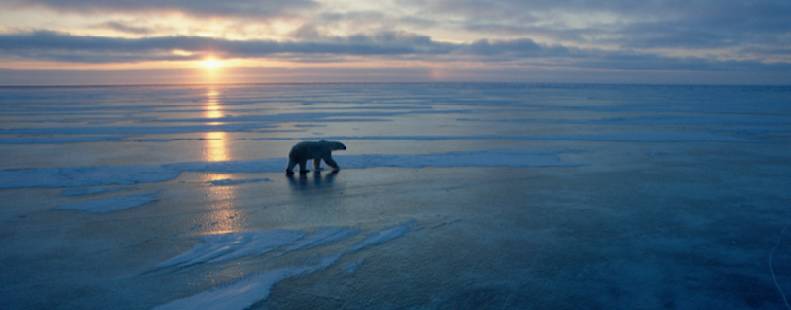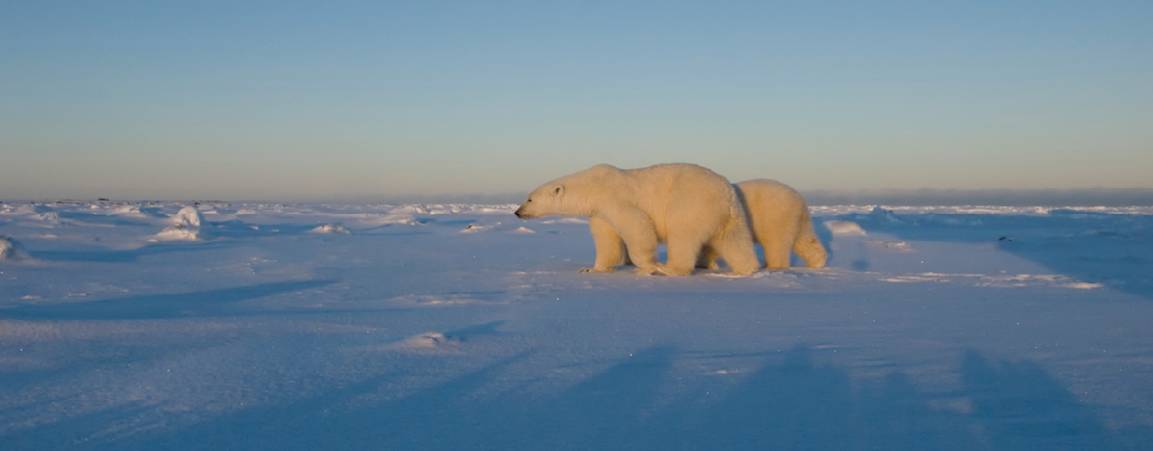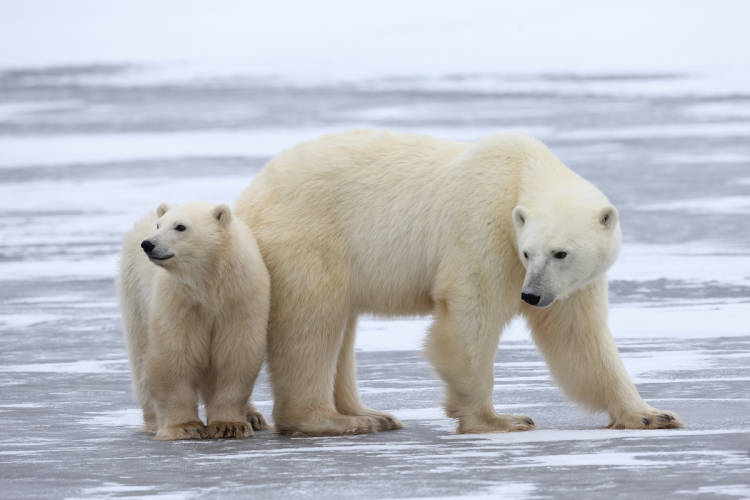Welcome to the exciting world of the polar bear.

Photo: Daniel J. Cox
From their origin story and characteristics to their habitat and diet, we’re giving you an in-depth look into the life of a polar bear.
Learn About Polar Bears

How the Sea Bear Got Its Name
While they likely evolved between 343,000-479,000 years ago, the polar bear didn’t receive its Latin name until 1774. Ursus maritimus refers to the animal's close association with the Arctic's chilly waters and sea ice.

Photo: Daniel J. Cox
Where They Live and Eat
A polar bear’s home is on the sea ice, where it hunts seals at open leads and breathing holes. The bears prey on both ringed and bearded seals across their range, but will take other prey when available.



Growing Through the Seasons
Female polar bear’s typically have a litter every 3 years starting at age 5. Newborns weigh little more than half a kilogram (one lb) and are ~30-35 cm long. They are blind, toothless, and covered with short, soft fur.

Photo: Daniel J. Cox
What They’re Like in the Arctic
From fur to skin, to paws and claws, the polar bear’s physique is built to dominate the Arctic. They are a vital part of this vulnerable ecosystem and a charismatic symbol of the North.



Their Fate is in Our Hands
Scientists estimate that there are currently about 26,000 polar bears worldwide. But without action on climate change, a 2020 study shows that we will lose all but a few polar bear populations by the end of the century.

Photo: Tim Auer / Polar Bears International
Meet Anuri. She’ll be your guide.
Anuri is a 22-year-old polar bear and has one coy (cub of the year). Her sharp eyes, keen nose, and careful hearing help her find prey and teach her cub how to survive on the Arctic sea ice. Follow her journey across the sea ice on our Polar Bear Tracker!









